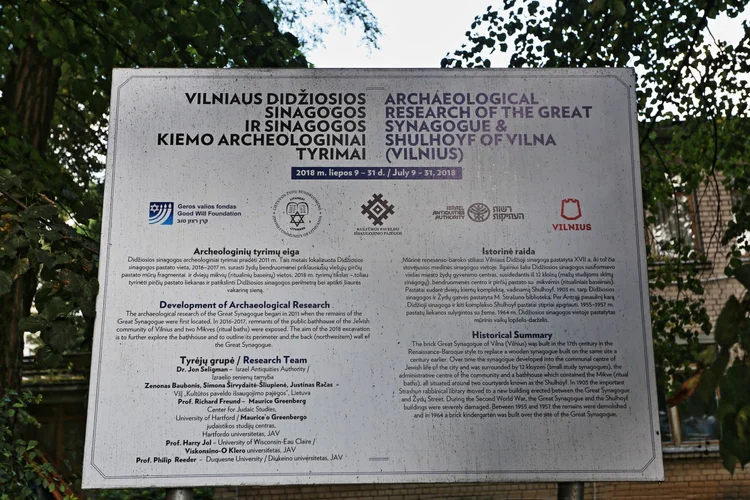Place of the Great Synagogue

The Great Synagogue of Vilnius – the Spiritual and Cultural Life Centre of Lithuanian Jews – existed from the end of the 16th century until the Holocaust. At the end of the 16th century (about 1572), the Vilnius Jewish community were granted the right to attend their houses of prayer. The first house of prayer was wooden. In 1633, King Wladyslaw IV Vasa allowed a brick synagogue to be built in the Jewish Quarter. Given its size and grandeur, this synagogue was well ahead of all other similar structures of the time and could host several thousand people. War and fires later damaged the synagogue. The architectural monument, which was also severely damaged, survived the Second World War, but it was later destroyed under Soviet rule.
Addition – excavations:
The territory of the Great Synagogue of Vilnius, known as an important spiritual and educational centre for Jews, was recently excavated three times. In 2011, a team of archaeologists from the USA, Israel and Lithuania discovered fragments and details of a rather well-preserved building. In 2016–2017, fragments and the place of the Mikveh (ritual pool) of a public bathhouse belonging to the Jews were found. Scientific archaeological studies of the synagogue complex were also conducted in July 2018. During recent excavations, archaeologists found the Bimah, the main chapel, as well as the floor slabs, which girdled the platform. Archaeologists are still looking for the exterior building walls and want to find the original floor.
